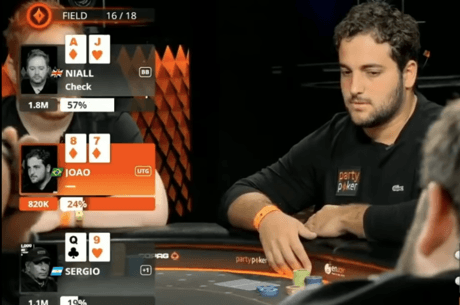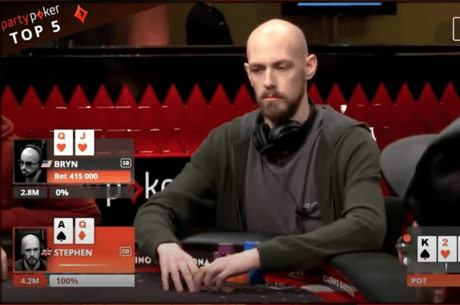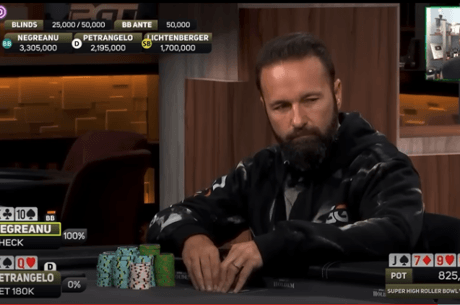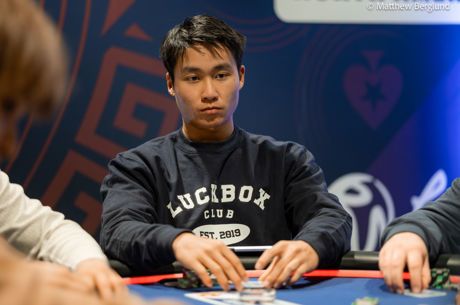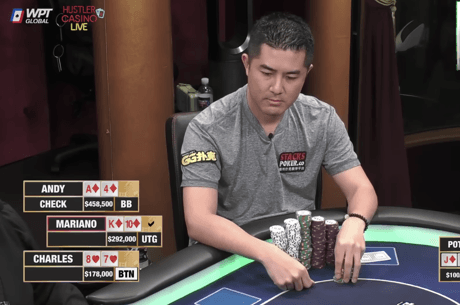Jonathan Little Examines the Insane Bet Igor Kurganov Faced Against Kahle Burns
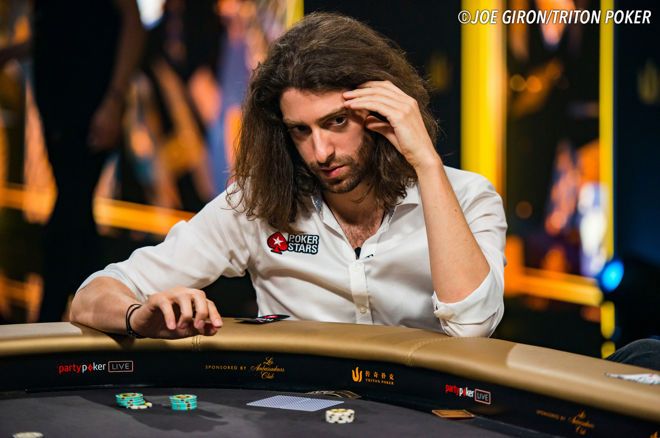
In this poker hand, Igor Kurganov faces off against Kahle Burns in a Super High Roller heads-up battle. The latter opts for an insane bet on the river as he puts the former to the ultimate test. Can Kurganov put on the cape and find a hero call? Let’s find out.
The hand took place on the final day of a partypoker MILLIONS UK $25K Super High Roller. Action was heads-up with the blinds at 125K/250K/250K when Kurganov (27 million) raised the button to 550,000 holding the 4♦4♠ and Burns (9.3 million) looked down at the J♦10♠. He called and thus far it was pretty standard stuff.
The 7♦5♣2♦ flop favored the big blind’s preflop calling range more so than the button’s raising range, and action went check-check. I think this is fine. If you bet and get raised, it can get pretty nasty. However, I want to be clear, if you decide to check back the flop with a marginal made hand, you must not fold to a small amount of aggression on the turn.
"If you think your opponent’s going to be aggressive, then you really want to give them a chance to bluff."
When you have a marginal-made hand, as Kurganov does, you want to play a small or medium pot. By checking back, you control the size of the pot and may induce your opponent to bluff. If you think your opponent’s going to be aggressive, then you really want to give them a chance to bluff.
On the 3♦ turn, Burns picked up a flush draw to go with his overs, while Kurganov picked up an inferior flush draw along with an open-ended straight draw. Burns bet 725,000, and he should not be betting unless he planned to bet again on most river cards. Here, Kurganov’s range is going to struggle against a big bet on both the turn and river.
It seemed like a pretty easy call here for Kurganov. He should not raise as he will only get action from hands that are already beating him or have lots of equity against his small pair, and indeed he did call to see the 4♥ river, which gave him a set. That said, it also put a four-liner to a straight on the board.
Kurganov’s range will contain a lot of ace-high hands that made a straight and some sixes, but many one-pair hands. In this scenario, Burns needed to figure out what hands he was trying to get to fold when thinking about betting and size that bet accordingly. Kurganov’s range is going to often be stronger than just a marginal pair on this board, so Burns did not want to bet small against a strong range.
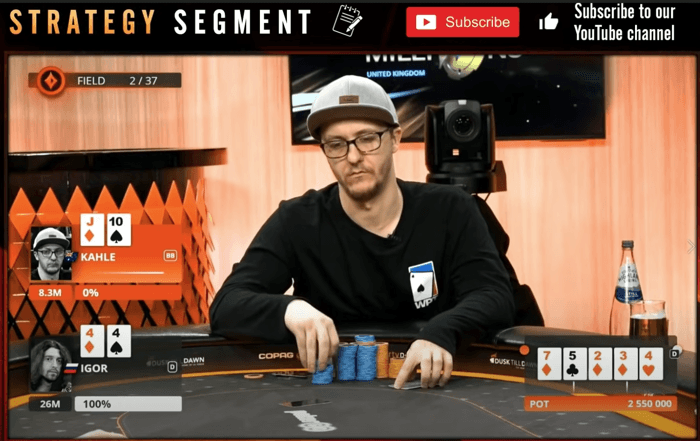
So, what is the bet that will get your opponent to fold an ace, which Kurganov will often have here? If Burns wanted to go for a bet, he needed to go for a really big one. Whenever you are very polarized, you usually want to bet as big as you reasonably can as long as you are still balanced with some portion of your range.
As Burns had the J♦, it reduced the combinations of flushes that Kurganov could potentially have. Given all that, I think this is a great spot to go for it provided he either uses a very small or very large size depending on how strong he thinks Kurganov’s range is.
With 2.55 million in the pot, Burns moved all in for 8.3 million. It was a brutal spot for Kurganov, who essentially had a bluff catcher. I don’t know what he could really do in this spot other than fold. If he had the A♦, K♦, or Q♦ then I think he should hero call more often as he blocks so many more combinations.
Kurganov thought about it for a long time but eventually folded his hand. In general, I think it’s the right move assuming you’re up against a balanced range.
For those wondering, Burns went on to win the tournament for $350,000 while Kurganov finished in second place for $222,250.
For a more thorough breakdown of this hand, check out my thoughts in the following video used with permission from partypoker:
Jonathan Little is a professional poker player and author with over $7,000,000 in live tournament earnings. He writes a weekly educational blog and hosts a podcast at JonathanLittlePoker.com. Sign up to learn poker from Jonathan for free at PokerCoaching.com. You can follow him on Twitter @JonathanLittle.

